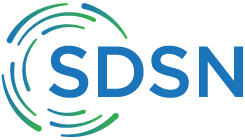Rationale and definition:
Access to primary health care services, including emergency obstetric care (EmOC), is necessary for achieving the health targets.1 Primary health services are defined broadly to include preventative, curative, and palliative care of communicable and non-communicable diseases, sexual and reproductive health services, family planning, routine immunizations, and mental health. All of these elements are equally important to ensure good health and wellbeing.
The proposed indicator tracks the average number of consultations – including preventative and curative services – with a licensed provider. Licensed providers in health facilities include all adequately trained personnel registered and integrated in a national health system. Countries will set their own definitions of “licensed;” however, definitions should include consultations with community health workers (CHWs) but exclude pharmacists.
There is agreement in the academic community that this is currently the most feasible and robust indicator on access to and utilization of services. WHO recommends a target for this indicator.2 Through disaggregation, this indicator can provide insight into the causes of lack of access. Disaggregation by wealth quintile reveals areas where high costs prohibit access for the poorest people, and disaggregation by region or province can reveal areas where the number of health facilities or the number of health workers are inadequate.
The WHO and the World Bank are jointly working to develop a more robust and sophisticated indicator on access to health services. Such an indicator could replace this formulation.
Disaggregation:
By sex, income, and region. Further opportunities for disaggregation to be reviewed.
Comments and limitations:
Data availability may be a limiting factor for applying this indicator in rural areas and some low-income countries, especially when tracking visits with CHWs. Yet, modern information and communication technologies make it possible to collect such data effectively and at low cost. Since the same data can be used to assess the performance of a health system and its various facilities, its collection should be encouraged.
A second limitation of the indicator is that it measures the average number of consultations across an entire population. Such averages do not give information on how many people are excluded from the health system for some or all types of consultations unless disaggregated by a wide variety of factors.
Alternative measures for access to health care services are expressed as “percent of population living within [x] kilometers of service delivery point.” A service delivery point is typically defined as any location where a licensed provider (including CHWs but excluding pharmacists) provides services. In the case of EmOC facilities, WHO defines the acceptable level of access as five facilities (including at least one comprehensive facility) for every 500,000 population. The difficulty with such geospatial indicators is that they do not adequately capture utilization and access, which may be conditioned by factors beyond physical proximity and affordability.
Preliminary assessment of current data availability by Friends of the Chair:
TBD
Primary data source:
TBD.
Potential lead agency or agencies:
WHO.
WHO (2009). Monitoring emergency obstetric care: a handbook. Geneva, Switzerland: WHO Press, 10.
WHO. “Chapter 1, Indicators Index.” Service Availability and Readiness Assessment (SARA): A methodology for measuring health systems strengthening. WHO: Geneva (2014).

